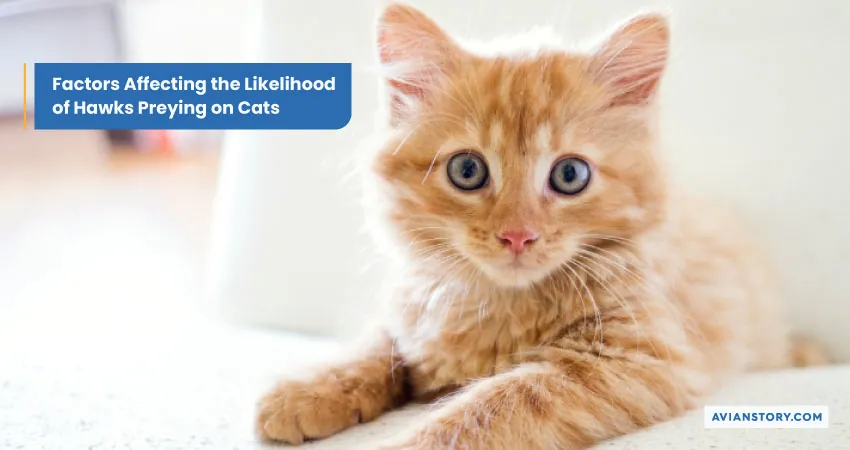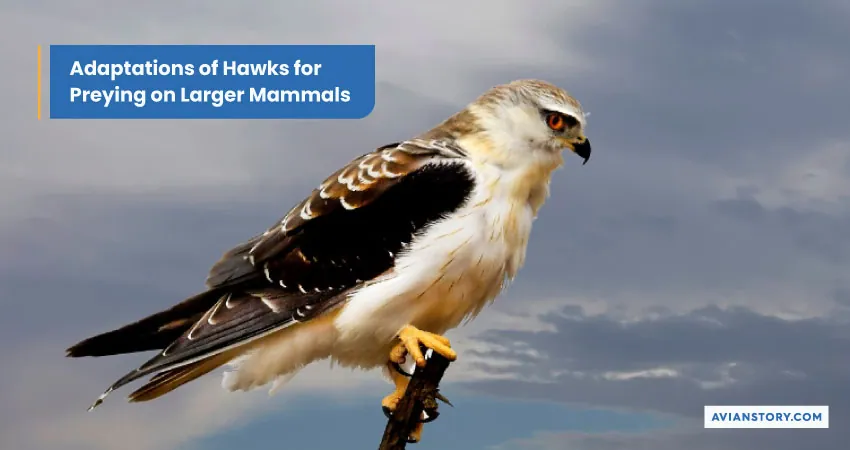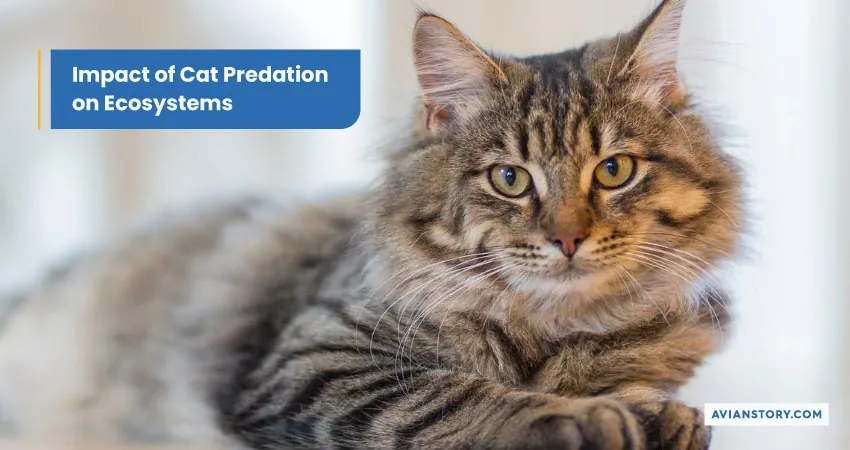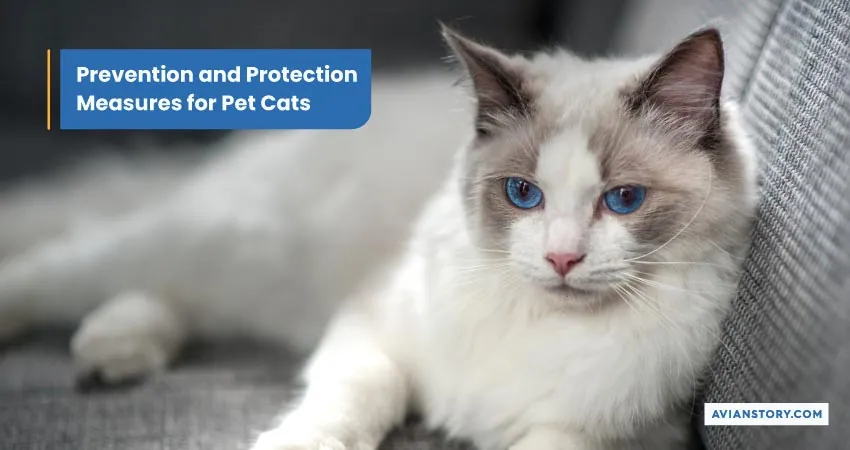Do Hawks Eat Cats? Can a Hawk Pick Up a Cat?
Hawks are great hunters, well-known for their hunting capabilities and the adaptations that contribute to their hunting success. They are also birds of prey that can hunt various animal species, both wild and sometimes domestic.
Cats are among the domestic pets that hawks can eat. However, various factors, including the size of the hawk and the cat, contribute to the likelihood of that happening. Besides, other factors like the availability of preferred prey and the hawks’ habitat also determine that possibility.
This article discusses the hawks’ ability to prey on cats and the probability of that happening. It also discusses various hawk adaptations that allow them to hunt larger prey and how humans contribute. So, read on.
Overview of Hawk Species and Their Size
There are various hawk species, and they vary in size. With the size determining the ability to hunt larger prey like cats, it’s ideal you understand them. The following table contains several common hawk species and their sizes.
| Hawk Species | Size (range) |
| Red-tailed Hawk | 18-25 inches |
| Sharp-shinned Hawk | 9.1-15 inches |
| Cooper’s Hawk | 13-21 inches |
| Red-shouldered Hawk | 17-24 inches |
| Ferruginous Hawk | 20-25 inches |
| Harris’s Hawk | 18-23 inches |
| Broad-winged Hawk | 13-17 inches |
| Northern Goshawks | 18-27 inches |
5 Factors Affecting the Likelihood of Hawks Preying on Cats

While it’s possible for a Hawk to prey on cats, several factors affect the likelihood of that hunting. They include
1. Size of the hawk
The size of the hawk is one of the major factors, as only the larger raptors can lift the cat’s weight. Red-tailed, Ferruginous and Northern Goshawks are among the large types capable of preying on cats.
2. Size and age of the cat
The cat’s size is also a determining factor in the likelihood of them becoming prey. So, how big of a cat can a hawk pick up? Hawks can prey on cats with an average weight of 10 pounds. However, most won’t be able to hunt prey with more weight than they are.
But can hawks pick up large cats? In most cases hawks can struggle and be unable to pick cats larger than 12 pounds. However, to be safe keep the pet sheltered even if it’s big because other larger predator birds, like eagles can pick it.
3. Availability of preferred prey
Hawks normally prey on reptiles, birds, and small mammals, like squirrels. So if you are wondering, do hawks eat squirrels? These are their preferred prey. And if they are available and plenty, hawks are unlikely to prey on cats.
4. Habitat and location
Most hawk species prefer living in forested areas, while some prefer semi-arid areas. When they lose these habitats through urbanization or climate change, they end up in urban areas where they begin preying on domestic pets like cats.
5. Cat behavior and vulnerability
Hawks only prey on cats when they’re outside the house and are very unlikely to enter a house. If your cat prefers to loiter in the streets or busk outside, it’s likely to be preyed on.
Often cat owners wonder, do hawks eat kittens? Kittens are often the most vulnerable not only because they are small, but because they are most curious.
Documented Cases of Hawks Preying on Cats
While hawks preying on cats is rare, there are several documented cases of it happening. In the following video, a hawk airlifts a cat and flies away with it.
The following is another video of a hawk choking a cat and then flying away with it.
1. The rarity of such events
The possibility of a hawk preying on cats is rare, as they prefer other types of prey who are easier to hunt and catch. Also, various factors come into play, including the cat’s better reaction time allowing them to escape on time.
But what happens if the cat is dead? Do hawks eat dead cats? The hawk can eat a dead cat if it’s hungry enough and short of options.
2. Circumstances and factors leading to cat predation
Some of the circumstances under which a hawk may prey on a cat include
- When there are no other food sources for the hawk
- If the cat is too close to a hawk’s nest
- If the cat threatens the hawk, mostly by curiously getting too close to it
- If a cat catches a prey animal that the hawk is interested in
3. Public Reaction and Awareness
People who have witnessed a cat attack on their beloved pets have warned other members of the community to protect their pets. However, to be able to provide a permanent fix they out to observe what kind of bird attacks cats.
Electing various hawk deterrents, like owl or eagle decoys and reflective tapes has proven effective. These decoys also scare other predators and small mammals from the yard.
Adaptations of Hawks for Preying on Larger Mammals

Hawks owe their great hunting prowess to their physical and behavioral adaptations. These adaptations enable them to hunt larger prey successfully.
A. Physical adaptations
Some of the physical adaptations include:
1. Talons
Hawks possess large, sharp talons to hold and squeeze prey. Their talons are usually more extensive than most birds of prey, allowing them to hunt on larger prey animals, like cats.
2. Beak
Hawks’ beaks are curved and sharp on the tip, which enables them to pierce larger prey animals and kill them faster. They also use their beaks to skin them and tear them apart to suitable sizes.
3. Vision
Hawks have a vision up to eight times more than humans. They use their excellent sight to spot prey distances away. Cats’ fur colors, like orange, allow the hawk to spot them from afar, swoop in, and carry them away.
B. Behavioral adaptations
Following are hawks’ behavioral adaptations that enable them to hunt larger prey.
1. Stealth and surprise
Hawks are stealthy, especially when hunting larger prey, capable of spotting them from a distance away. Stealth enables them to surprise them and catch them. With the great cats’ agility and reaction time, stealth and surprise are crucial adaptations.
2. Persistence in chasing prey
Hawks are also persistent when chasing prey in open fields with few hiding spots. This allows them to wear out larger prey animals and catch and kill them.
3. Opportunistic hunting
Hawks’ diet is flexible and allows them to survive in different habitats, including urban centers. They adjust to these different diets when their favorites and preferred foods are scarce.
Impact of Cat Predation on Ecosystems

Hawks preying on cats have an impact on the ecosystem in various ways, including
1. Effects on cat populations
For one, the number of cats is significantly reduced in these areas where they’re hunted. The dropping numbers end up affecting the cat population and reducing it.
2. Influence on prey species and food web dynamics
When hawks prey on cats, who are also predators of some prey animals in the food web, prey species in the food web are affected. Research shows that top predators prevent an abundance of one prey species, increasing diversity in the food chain.
3. The natural balance between predators and prey
When predators begin hunting other smaller predators, the number of prey animals in the food chain grows. This growth creates an imbalance in the natural predator and prey distribution, creating strain on the primary producers.
Human Impact on Hawks’ cat predation
Humans are among the causes of hawks’ predation on cats in the following ways;
1. Urbanization and habitat fragmentation
Through urbanization, humans have destroyed or fragmented native hawks’ habitats, forcing them into urban centers. In these new habitats, they adjust their diet, preying on domestic pets, including cats.
2. Availability of food sources
Some bird lovers use bird feeders with good intentions, like feeding hungry birds and searching for food. However, these food sources also invite predators who, in the hunting process, spot pets and hunt them.
3. Domestic cats vs. feral cats
Feral cats are usually weary of threats, such as hawks, and hide when they spot one. However, a domestic cat will likely approach a hawk on the ground to investigate curiously.
Prevention and Protection Measures for Pet Cats

There are various ways to protect your beloved pet cats from predators like hawks. They include
Keeping cats indoors or providing outdoor enclosures
One way to keep the cat safe is to keep it indoors, where hawks are unlikely to visit and prey on them. If that is not an option because you need your cat to explore outdoors, you can provide outdoor enclosures.
Supervised outdoor time
Another option to safeguard the pet is by supervising it when it is outdoors. You can observe for hawks’ and other predators and shelter the cat when you detect danger.
Use of visual deterrents (e.g., collars with bright colors)
Hawks don’t do various things, including bright colors, which you can use in the cat’s collar to scare them away.
Educating pet owners on potential risks
Among the effective prevention measures for cat predation is educating pet owners. The owners become aware of potential risks and take better care of the pets.
Conservation Efforts
Following are various conservation efforts that can help reduce hawk predation on cats.
Habitat restoration and preservation
Since hawks may occupy urban centers after they lose their habitats, restoration and preservation efforts can give them back their natural habitats. Through these efforts, the hawk population in the urban centers drops, reducing the possibility of pet predation.
Education and awareness campaigns
Through education and awareness campaigns, many people become aware of how their actions may bring the hawk predation problem. For instance, bird feeders invite more hawks into urban centers, which habitat fragmentation also does. The people become aware of these effects and avoid problems
Monitoring hawk populations and their impacts
Monitoring the hawk population, especially in urban centers, can help prevent predation on pets. With this knowledge, you can anticipate the impact on the population and prevent it.
Bottom Line
As you now know, hawks won’t hesitate to attack your beloved feline pet. If your pet cat is light enough to be airlifted by larger species of hawks, it’s in danger. However, cat predation likely happens in the absence of the hawks’ preferred prey.
Human actions, like urbanization and providing bird feeders, also contribute to predation. To protect your cat, you can keep it inside or supervise it while it walks. However, you can also engage in various conservation efforts to provide hawks with their preferred habitats and prey.
